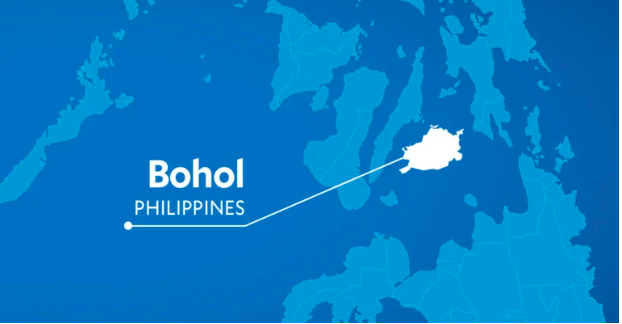Karakol as a street dance of faith during Bohol’s Fiesta month of May
Gorechos hailed from Barrio Matabao in Tubigon, Bohol which celebrated its barrio fiesta last May 8.
The first habitants in Tubigon settled along the shores of the river. Seasonal overflowing of the river flooded the community and led the place to be called “Tubigan” (meaning “place having water” or “watery”), which later morphed into “Tubigon” (meaning “place abounding in water”). Tubigon has 34 barangays and 17 minor islands. Known to be fiesta month, it is jokingly said Bohol is “sinking” during May because the population of the island is multiplied twice, thrice, or even four times.
Known as a reverse exodus or “balikbarrios”, once the first of May strikes, people from abroad, Manila, and even nearby provinces begin flocking back to their small barrios in Bohol.
Date of fiestas in Bohol vary from town to town yet most of the feast days fall on the month of May, earning it the name the “Fiesta Month”. Barrio Matabao is not an exemption whose fiesta falls on May 8 for its patron saint San Jose while Tubigon is on May 15.
One of the highlights of the Matabao fiesta is the Karakol, a procession dance or street dancing ritual that is considered to be of the cultural practices with a religious meaning.
It is part of panata (vow) which is usually carried out as colorful form of plea to God for continued provision of daily needs or as thanksgiving for healing, blessing or granted wish.
Filipino Catholics are known for having sincere, enormous, and extreme expressions of piety considering that the country is the third-largest Catholic population in the world.
Essentially fusions of Catholic and secular beliefs and practices, fiestas are prime manifestations of the Filipino’s fervent devotion and faith characterized by history, artistry, creativity, and passion.
Filipinos are “visual” religious people who like to tell stories by acting them out in the form of mass gatherings like processions.
The more popular religious street dancing events include Sinulog, Dinagyang, Ati-Atihan and Dinagsa.
The word Sinulog came from the Cebuano adverb “sulog” roughly meaning “like water current movement” describing the forward-backward dance movements. The dance consists of two steps forward and one step backward, done to the sound of drums.
In Ati-Atihan, the street parade is known as Sadsad, a form of dancing where the foot is momentarily dragged along the ground in tune to the beat played by the marching bands while participants paint their faces with black soot.
In Dinagyang, the Ati tribe competition consists of a number of “warrior” dancers in a tribe dancing in a choreographed formation and patterns as well as chanting to the sound of loud drum beats and improvised percussion instruments innovated by the respective tribes.
As “prayer through dancing” or “pasayaw na pananalangin”, the Karakol is a procession with a slow snail-like pace as its etymology came from the Spanish word “caracol” which means snail. The term symbolizes resilience and is also attributed to the shedding of the shell covering of the snail to reveal a different and much livelier side of the participants.
The karakol started with a parade of performers (devotees, and locals) going to the barangay proper while dancing to effervescent music to show their sincere devotion to the patron saint San Jose.
Characterized by an abundance of food and merriment, not a single day will pass without a fiesta somewhere on the island.
Old folks seem to have mastered the art of putting out most of their earnings for the year.
Filipinos take their festivals and fiestas seriously as part and parcel of our culture.
Fiesta means “feast” from the Latin word “festus” meaning ”festive, joyful, or merry.” The roots of Philippine fiestas go back even further than Spanish colonial rule.
Pre-Hispanic Filipinos had their own set of cultures and traditions Including worshipping many gods or anitos. They made regular ritual offerings to placate the gods.
When Spanish missionaries came to the Philippines in the 1500s, they discovered that the fiesta was a helpful tool to help teach Filipinos the Roman Catholic faith and its saints, as indigenous Filipinos already had a sense of patronage of a deity for their mostly pagan practices and rituals.
Each fiesta or festival has a unique theme which defines its flavor through a set of activities, such as religious processions, live brass bands, street dancing or parade of dancers in colorful costumes and props, high masses, sports fest, beauty pageants, cultural shows and performances.
A wonderful fiesta season means good luck for the rest of the year.
(Peyups is the moniker of University of the Philippines. Atty. Dennis R. Gorecho heads the seafarers’ division of the Sapalo Velez Bundang Bulilan law offices. For comments, e-mail [email protected], or call 09175025808 or 09088665786.)
Disclaimer: The comments uploaded on this site do not necessarily represent or reflect the views of management and owner of Cebudailynews. We reserve the right to exclude comments that we deem to be inconsistent with our editorial standards.

